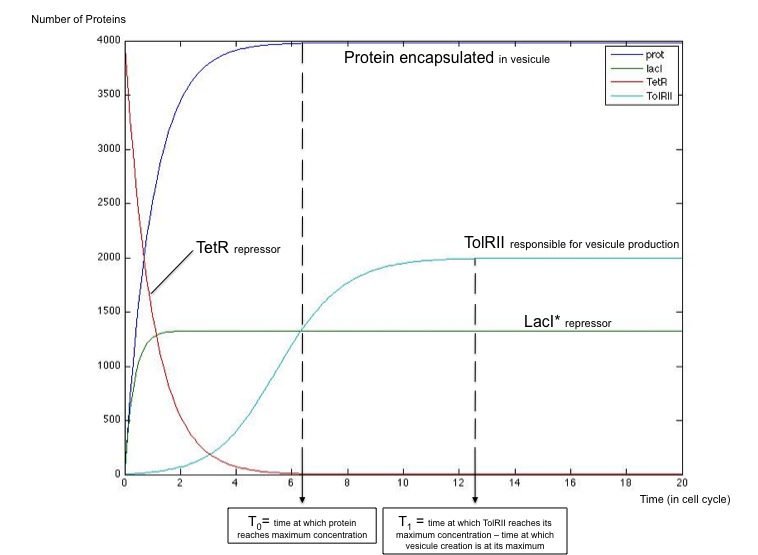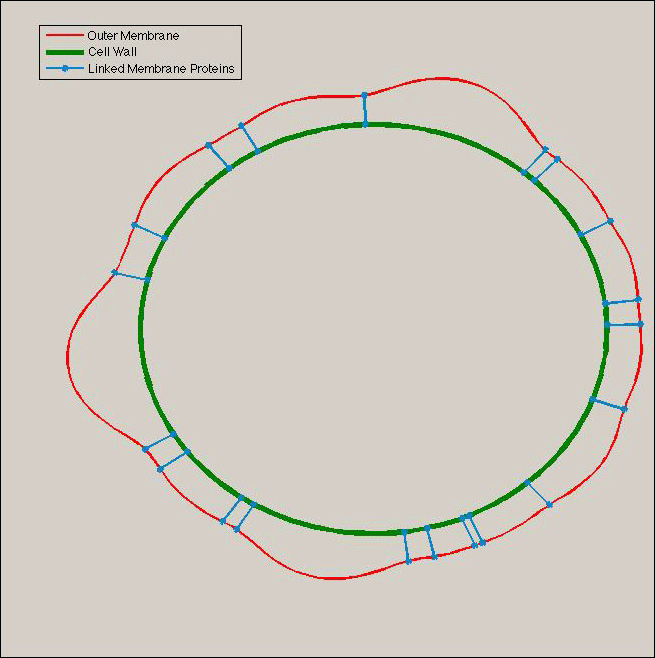Team:Paris/DryLab
From 2009.igem.org
(→Results) |
(→Results) |
||
| Line 45: | Line 45: | ||
Indeed, the over expression of TolRII takes an important part in the creation of vesicles, disturbing the Tol-Pal system which '''act as a physical anchor for the outer membrane to the cell-wall''': | Indeed, the over expression of TolRII takes an important part in the creation of vesicles, disturbing the Tol-Pal system which '''act as a physical anchor for the outer membrane to the cell-wall''': | ||
| - | Team:Paris/Production modeling2#top|Details]]</u>) that the formation of ''blebbing'' is due to this anchor system and to the osmotic pressure increase caused by the peptidoglycan turnover. | + | <u>[[Team:Paris/Production modeling2#top|Details]]</u>) that the formation of ''blebbing'' is due to this anchor system and to the osmotic pressure increase caused by the peptidoglycan turnover. |
[[Image:Vesicle_wiki.jpg|400px|center]] | [[Image:Vesicle_wiki.jpg|400px|center]] | ||
Revision as of 13:29, 18 October 2009
iGEM > Paris > Home > DryLab > Main
Main
Questions
Our Message in a Bubble project is fully integrated inside a reflection on communication between bacterias. Among all problems raised during the discussions, we solved 3 of them with modelisation :
- To improve the quality of signal sent, how can we get a synchronisation between the maximum concentration of proteins encapsulated and the maximum quantity of vesicules sent by time units ?
- To obtain the maximum of vesicle, How using the link between Tol-Pal system's disturbing and the creation of vesicles ?
- How can we optimize the quality of the reception i.e getting a robust response with a limited number of messengers sent ?
Results
To create a delay between the maximum concentration of proteins and of the maximum creation of vesicules by time units, we used a transcriptional cascade inside the genetic network thus synchronising protein and vesicule creations.
Plot showing that vesiculation happens only once the protein encapsulated has reached its maximal concentration.
Indeed, the over expression of TolRII takes an important part in the creation of vesicles, disturbing the Tol-Pal system which act as a physical anchor for the outer membrane to the cell-wall:
Details) that the formation of blebbing is due to this anchor system and to the osmotic pressure increase caused by the peptidoglycan turnover.
figure: Blebbing simulation obtain for random Tol/Pal distribution.
- We show that an accumulation of protein in the aera of negative curvature is explainable by simple diffusion mechanism.
- We show that this two phenomenon linked together can explains the whole maturation of a blebbing in a vesicle.
Concerning reception, stochastic simulations revealed two possible problems reducing the robustness of our reception system :
- when the amount of messengers received is too weak, the activation does not always occur
- even when it occurs, the activation time can vary.
 "
"

